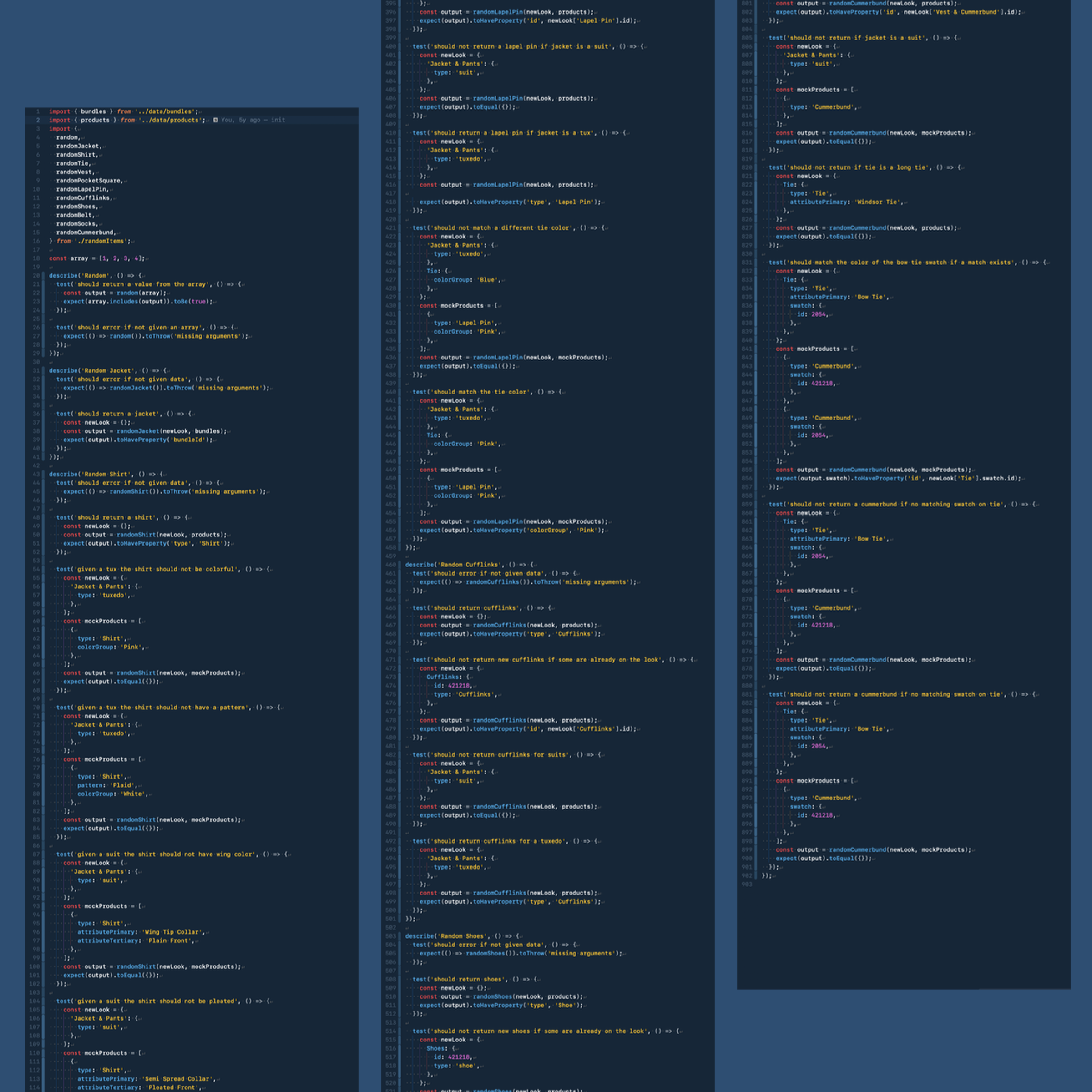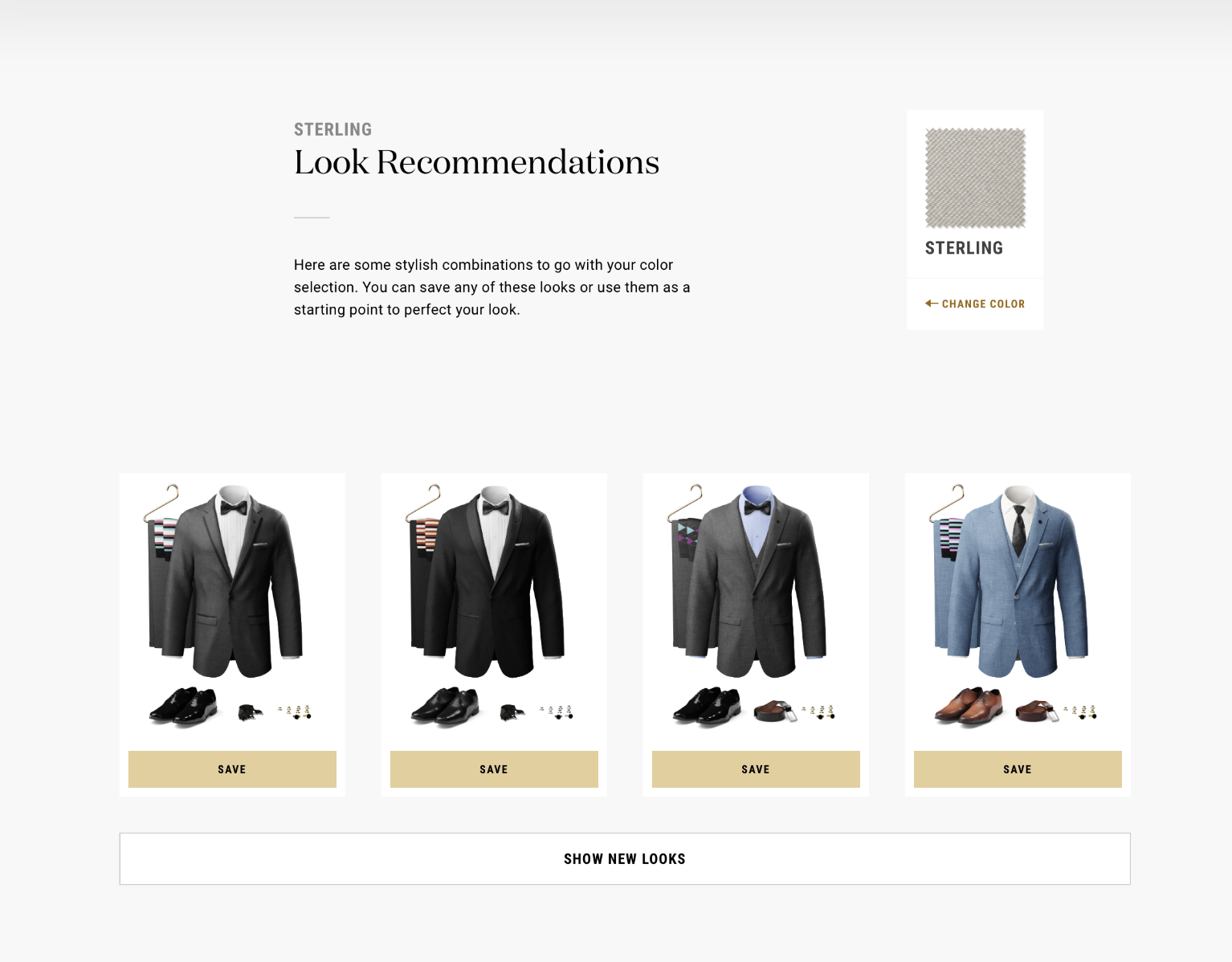Look Recommendations
Generation Tux
Generate a Look based on a Swatch

This feature was simple in theory and tricky in the details.
- Let a customer pick a color swatch.
- Show them pre-made looks to start customizing
- Here is where it gets tricky Make sure the pre-made look…look good.
But who decides what looks good?
Who’s willing to be accountable for that?
And who’s going to put in the effort to create all these Looks?
The answer to all of these questions took literal months to try and answer. And I should have seen it coming — the answer was me.
I was that person.
Asking someone to make a comprehensive document of all recommended looks based on color was a non-starter. There were hundreds of swatches that would need 4 to 20 looks each. And a look could have 8 to 10 garments each. Easily tens of thousands of things to manage.
So this meant we needed rules not explicit recommendations.
Again getting a single person or team to own this was impossible CX had their thoughts, Marketing had theirs, Leadership another set and better yet non of the rules were logically consistent.
At first, I thought I’d base the recommendations on historical customer data. But that approach failed to meet the “look good” standards of the leadership and marketing teams.
To start moving forward I built a command-line utility that let me pull production data and then test rules to generate test data for the prototype. This was key to have it not run on real production data which could have broken my prototype during testing.
A small sample of the rules for generating looks:

This approach allowed me to iterate on the design and rules quickly. I could share the prototype, let folks play with it, and collect their feedback. And nearly all the feedback boiled down to the same thing: “This Look doesn’t look good.”
So, I’d check their screenshots, ask what specifically didn’t work, and then tweak my rules to improve the recommendations.
Looking back, I’m glad I went with this over engineered approach. It let me move forward in a slow steady manner without regressing. The scale and randomness revealed issues that would’ve been hidden in Figma mockups or static layouts.

